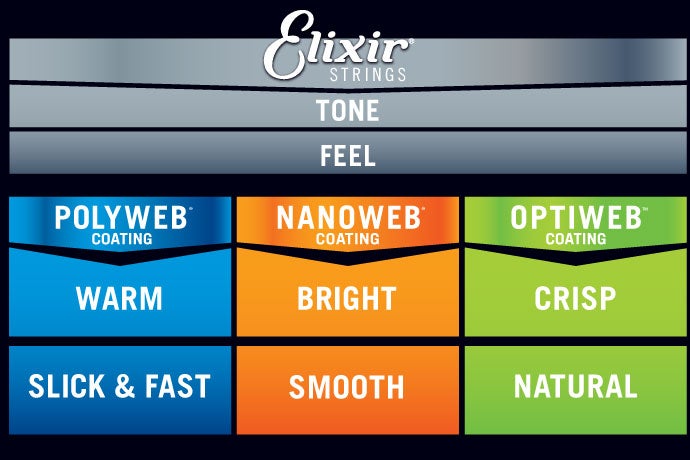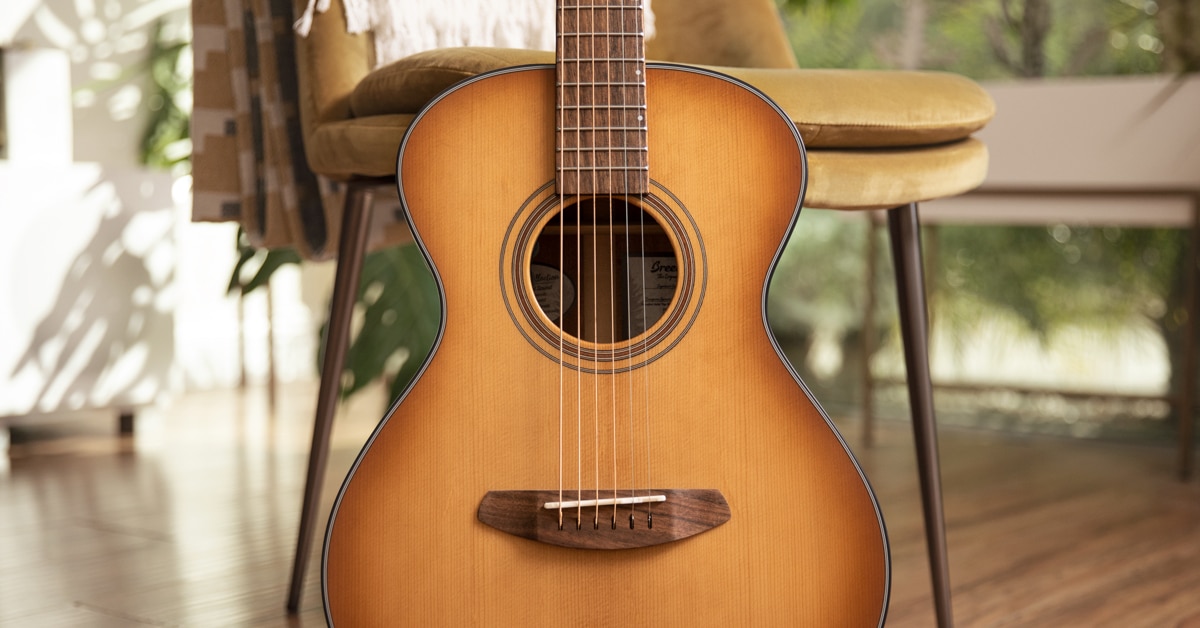Are you tired of strumming on strings that sound like they’ve been passed down through generations of musically challenged ghosts? Well, fear not, fellow guitar enthusiasts, because we have the ultimate guide to help you navigate the wild world of acoustic guitar strings. Get ready to swap out those rusty relics for some strings that will make your guitar sing like a choir of angels (or at least sound a little less like a dying cat). Let’s dive in and discover the key to unlocking your guitar’s full potential.
Contents
- 1 Understanding Different Types of Acoustic Guitar Strings
- 2 Exploring Core Materials: Steel, Nylon, and Beyond
- 3 Gauging the Importance: Thickness and Tension Explained
- 4 The Impact of String Coatings and Treatments on Tone and Longevity
- 5 Navigating String Brands and Price Points for Quality and Value
- 6 Matching Strings to Your Playing Style and Genre
- 7 Maintenance Tips: Prolonging the Life of Your Acoustic Guitar Strings
- 8 FAQs
- 9 Wrapping it Up!
Understanding Different Types of Acoustic Guitar Strings
So, you’ve decided to dive into the wonderful world of acoustic guitar strings, huh? Well, buckle up, my friend, because things are about to get wild!
First up, we’ve got good ol’ **nylon strings**. These babies are perfect for classical guitar players who want that sweet, mellow sound. They’re also great for beginners because they’re easier on the fingers. Plus, they come in fun colors like black, clear, and even rainbow! Who says guitar strings can’t be fashionable?
Next, we’ve got **steel strings**. These bad boys are perfect for rockers and country crooners who want that crisp, bright sound. Just be careful - they can be a bit rough on the fingertips, so make sure you’re not planning on doing any hand modeling any time soon.
And let’s not forget about **coated strings**. These are like the superheroes of the acoustic guitar string world – they’re super durable and resistant to corrosion, meaning they’ll last longer and stay in tune better. Just make sure you’re not allergic to superhero powers before slapping these bad boys on your guitar.

Exploring Core Materials: Steel, Nylon, and Beyond
When it comes to core materials, steel and nylon are like the dynamic duo of the materials world. They’re strong, they’re versatile, and they’re always ready for action. But what about all those other materials out there just waiting to be explored? Let’s take a look at some unconventional core materials that are sure to shake things up!
First up, we have carbon fiber. This material is like the sleek, mysterious stranger that just rolled into town. It’s lightweight, it’s incredibly strong, and it’s got a cool factor that’s off the charts. Carbon fiber is perfect for when you need a core material that’s as tough as nails but also as flexible as a gymnast.
Next on our list is Kevlar. This material is like the tough guy of the bunch – nothing can knock it down. Kevlar is known for its incredible strength and resistance to impact, making it ideal for applications where durability is key. Plus, it has a cool factor that’s hard to beat – who wouldn’t want a core material that’s bulletproof?
Last but certainly not least, we have aluminum. This material is like the class clown of the group – it’s light, it’s strong, and it’s always ready to make a statement. Aluminum is great for applications where weight is a concern, but you still need a core material that can hold its own. Plus, it’s recyclable, so you can feel good about being eco-friendly while you’re exploring the wild world of core materials.

Gauging the Importance: Thickness and Tension Explained
So you want to understand the importance of thickness and tension, do you? Well, let me break it down for you in a way that even a beginner can grasp. Thickness and tension go hand-in-hand when it comes to achieving the perfect balance in your projects.
When it comes to thickness, think of it like the foundation of a house. You want it to be sturdy and reliable, giving your project the structure it needs to succeed. Whether it’s the thickness of your paper, fabric, or yarn, you need to consider how it will impact the overall outcome.
Now, tension is like the glue that holds everything together. If your tension is off, it can throw off the entire project, leaving you with a wonky and unbalanced result. Proper tension is key to achieving a professional finish, so don’t overlook its importance!
- Always test your tension before diving into a project.
- Adjust your tension as needed to ensure a smooth and even result.
Remember, thickness and tension may seem like small details, but they can make all the difference in the world when it comes to your crafting endeavors. So, take the time to gauge their importance and watch your projects come to life in ways you never thought possible!

The Impact of String Coatings and Treatments on Tone and Longevity
When it comes to strings, coatings and treatments can make a world of difference in both tone and longevity. The type of coating applied to a string can drastically alter its sound and performance. Let’s dive into some of the most common coatings and treatments and how they impact your playing experience:
Some popular coatings include:
- **Polymer Coatings:** These provide a smooth, slick surface that reduces finger noise and enhances overall playability.
- **Nano Treatments:** These ultra-thin coatings protect against corrosion and offer a bright, crisp tone.
- **Cryogenic Treatments:** By subjecting strings to extreme temperatures, these treatments increase durability and stability, resulting in a consistent tone over time.
But beware – not all coatings are created equal! Some may add unwanted bulk to the string, while others may negatively impact sustain and resonance. It’s crucial to experiment with different coatings and treatments to find the perfect match for your playing style.
So next time you’re restringing your instrument, consider the impact of string coatings and treatments on your tone and longevity. It could be the key to unlocking a whole new world of sonic possibilities!

When it comes to choosing the perfect strings for your guitar, navigating through the endless brands and price points can be a daunting task. But fear not, fellow musician! I’m here to help you find the best quality and value without breaking the bank.
First things first, let’s talk about the big players in the string game. Brands like D’Addario, Ernie Ball, and Elixir are household names in the music world. Known for their durability and tone quality, these brands are sure to deliver a top-notch performance every time you pick up your guitar.
Now, let’s dive into the world of price points. While it’s tempting to splurge on the most expensive strings out there, you can still find great quality at a more affordable price. Brands like DR Strings and GHS offer a solid bang for your buck without sacrificing sound quality.
So, next time you’re in the market for new strings, remember to do your research and weigh your options. Whether you’re a beginner on a budget or a seasoned pro looking for the best of the best, there’s a string brand and price point out there waiting for you to discover. Happy strumming!
Matching Strings to Your Playing Style and Genre
When it comes to finding the right strings for your guitar, it’s all about matching them to your playing style and the genre of music you love to rock out to. Choosing the right strings will not only improve the sound of your playing, but it can also help enhance your overall performance. Here’s a guide to help you find the perfect strings that match your unique style and genre:
Rock on with Heavy Gauge Strings:
- If you’re a metalhead who loves shredding on your guitar like there’s no tomorrow, then heavy gauge strings are the way to go. These strings are thick and durable, perfect for those power chords and fast riffs that define the metal genre.
- Heavy gauge strings can withstand the intense strumming and bending that comes with shredding, so you can rock out with confidence and power. Plus, they produce a deep, thick tone that will make your guitar sound like a beast on stage.
Get Jazzy with Light Gauge Strings:
- For all you jazz aficionados out there, light gauge strings are your best bet. These strings are thinner and more flexible, making them perfect for intricate fingerpicking and complex chord voicings that define the jazz genre.
- Light gauge strings offer a smooth, mellow tone that is ideal for creating those soulful melodies and smooth transitions that jazz is known for. So, grab your guitar and let those light gauge strings take you on a musical journey through the world of jazz.
Maintenance Tips: Prolonging the Life of Your Acoustic Guitar Strings
So you just got yourself a shiny new acoustic guitar and you want those strings to last as long as possible? Well, fear not my fellow rockstar, for I have some maintenance tips that will make those strings sing for ages!
First things first, make sure you wash your hands before playing. Those greasy pizza fingers are not a friend to your strings! Keep them clean and your strings will thank you.
Next, give your strings a wipe down after each jam session. Use a soft cloth to get rid of any gunk and sweat that may have accumulated. Your strings will appreciate the TLC.
Lastly, don’t forget to store your guitar in a cool, dry place. Extreme temperatures and humidity can wreak havoc on your strings. Keep them happy and they’ll keep on strumming along!
FAQs
What type of material should I look for in acoustic guitar strings?
Well, if you want the strings to last longer than a bag of chips at a party, you should probably go for ones made of bronze or phosphor bronze. They have a nice balance of durability and tone quality that’ll make your guitar sing like a canary.
How often should I change my acoustic guitar strings?
Think of it this way: if your strings start looking more rusty than a sunken pirate ship, it’s probably time for a change. In general, it’s a good idea to swap them out every 1-3 months, depending on how much you play and how well you take care of them.
What gauge of strings is best for an acoustic guitar?
That really depends on your playing style and personal preference. If you like to strum with the force of a thousand suns, you might want to go for heavier gauge strings. If you prefer a lighter touch, then lighter gauge strings are the way to go. Experiment and find what feels right for you!
Should I use coated strings for my acoustic guitar?
Coated strings are like putting your guitar in a protective bubble wrap suit. They can help your strings last longer and stay fresh, even if you have corrosive fingers that turn regular strings into rust magnets. Plus, they can give your tone a little extra shimmer. So, yeah, coated strings are pretty rad.
Can I use electric guitar strings on my acoustic guitar in a pinch?
Sure, you can use electric guitar strings on your acoustic guitar…if you want it to sound like a dying robot. Electric guitar strings are designed for magnetic pickups and have a different composition that won’t give you the warm, full sound you want from an acoustic. So, while it might work in a pinch, it’s definitely not the ideal choice.
Wrapping it Up!
Well, there you have it folks! You are now officially a certified acoustic guitar string expert. You can now impress all your friends at the next campfire jam session with your newfound knowledge. Remember, choosing the right strings for your instrument is key to achieving that perfect sound. So go forth, strum away, and let the music flow! Until next time, keep on rocking (or should I say, strumming)!



